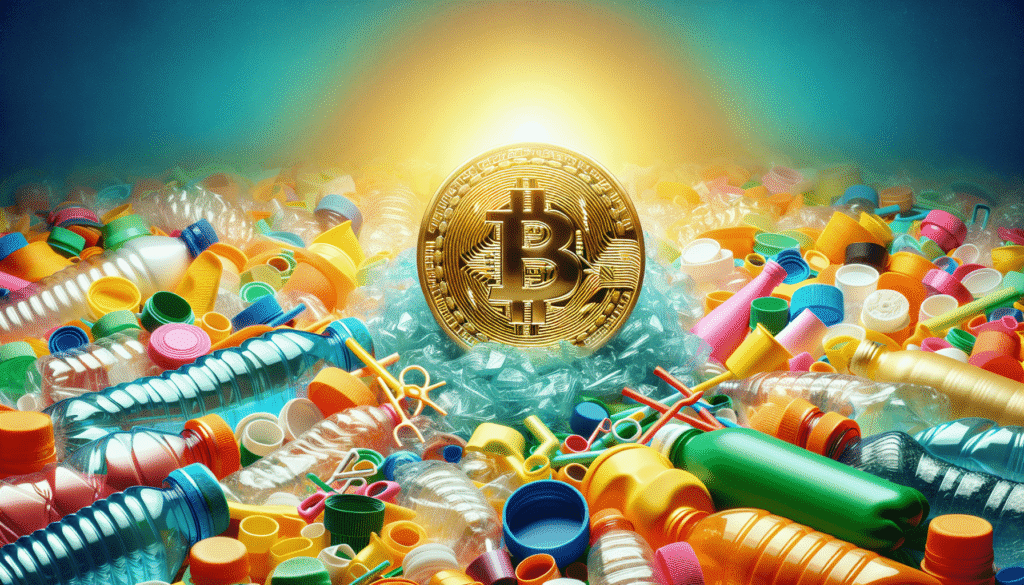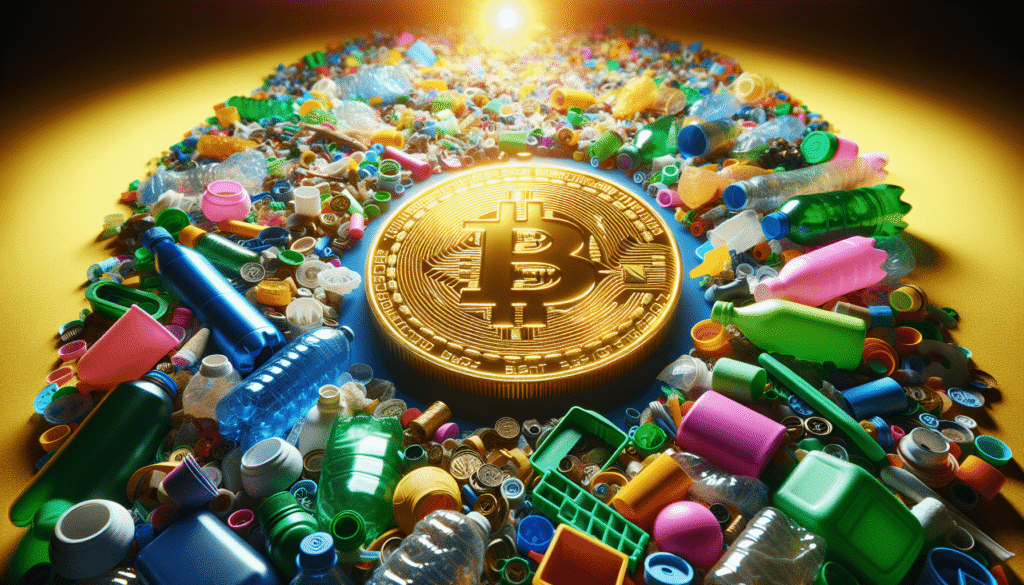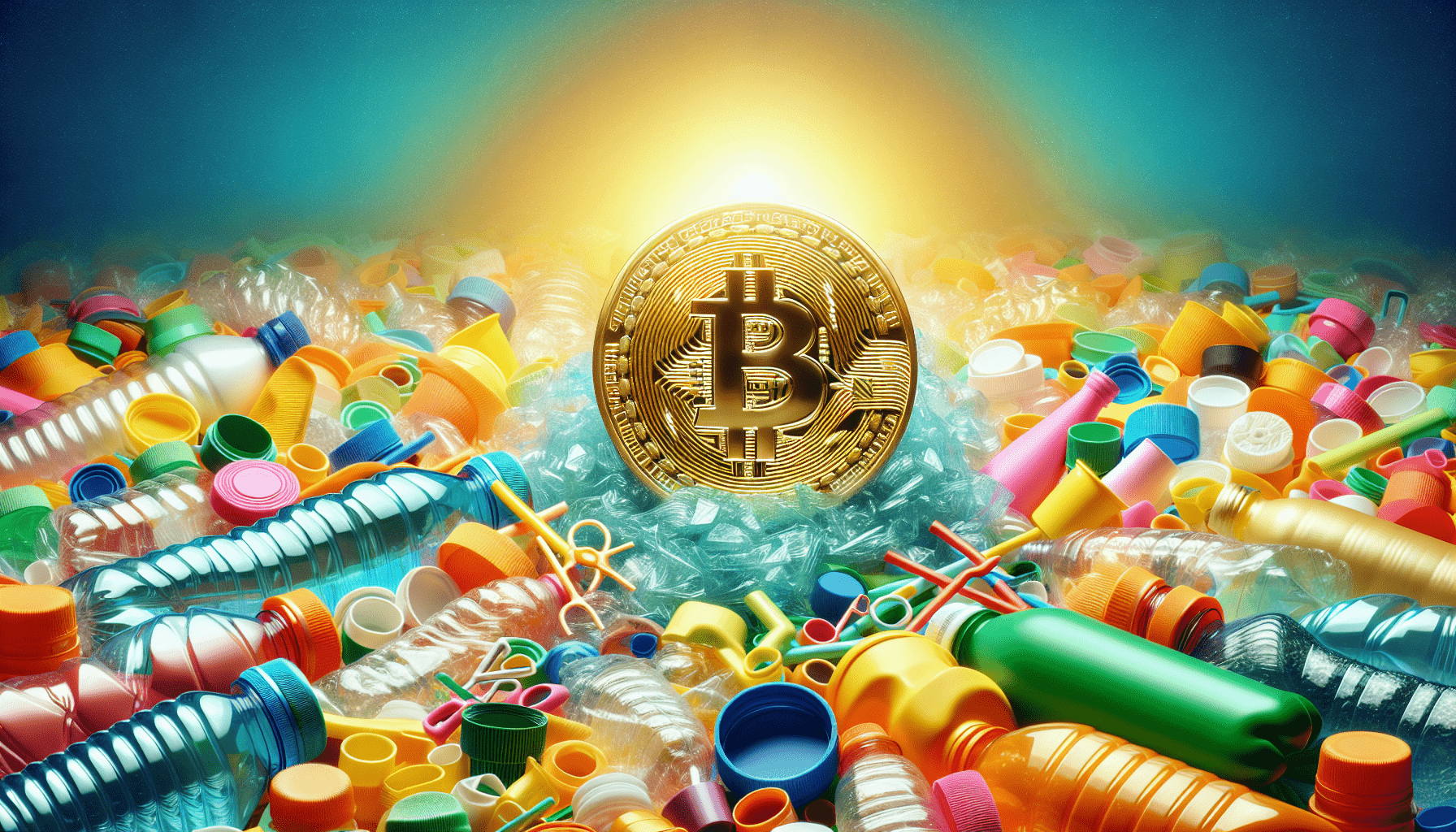Have you ever wondered how something as intangible as cryptocurrency could have a real-world impact on an issue as tangible and pressing as plastic recycling? In our rapidly digitalizing world, we’re starting to find innovative solutions that leverage technology in unexpected ways. Using cryptocurrencies to address the plastic recycling problem is one of those revolutionary ideas that are both intriguing and impactful.

Understanding the Basics: What Is Cryptocurrency?
Cryptocurrency, in its simplest form, is a type of digital or virtual currency that uses cryptography for security. Unlike traditional currencies, cryptocurrencies are decentralized and primarily use blockchain technology to record transactions. This means that no central authority, like a bank or government, controls it, which adds a layer of security and transparency. For some, this democratization of currency represents financial liberation and potential for innovation.
How Does Cryptocurrency Work?
At its core, a cryptocurrency transaction involves sending digital tokens from one person to another over a decentralized network. This is all made secure and transparent through the underlying technology known as blockchain—a digital ledger that records every transaction. It’s like having a massive spreadsheet shared across countless computers around the world, where every transaction is agreed upon and recorded by each participant, making fraud extremely difficult.
Popular Cryptocurrencies You Could Use
There are thousands of cryptocurrencies out there, but not all are suitable for every purpose. For our interest in plastic recycling, you might consider Bitcoin, Ethereum, or newer altcoins specifically designed with environmental causes in mind. Each has its unique pros and cons, depending on how they are used and traded. For instance, Ethereum has become popular because of its smart contract capabilities, which can be particularly useful for projects blending environmental goals and technology.
The Plastic Problem: Why It Needs Innovative Solutions
Plastic has become an inextricable part of modern life, found in everything from packaging to gadgets. Yet, its convenience comes at significant environmental costs. Due to its non-biodegradable nature, plastic waste accumulates in landfills and oceans, posing a severe threat to ecosystems. Recycling can mitigate some of these effects, but the current systems are overwhelmed and inefficient.
The Impact of Plastic Waste
As plastic breaks down, it fragments into microplastics that can infiltrate water sources and enter the food chain, affecting wildlife and human health alike. These microplastics are nearly impossible to remove from the environment once they are there. Moreover, producing new plastic products requires energy and fossil fuels, exacerbating the problem of global warming.
Current Recycling Challenges
The global recycling rate of plastic is dismally low, hovering around 9%. There are numerous reasons for this: lack of infrastructure, complex sorting processes, and insufficient economic incentives to recycle. A profound change in how plastic is recycled is necessary if we’re to make a sizable dent in the problem.
Marrying Two Worlds: How Cryptocurrency Can Aid Plastic Recycling
Using cryptocurrency for plastic recycling involves developing systems where digital tokens can incentivize behaviors that promote recycling. Innovative ideas are beginning to flourish where consumer actions, such as reducing waste, reusing goods, or actively participating in recycling efforts, are rewarded with crypto tokens. These tokens can then be used in various ways, nurturing a culture of sustainability.
The Incentive Model
By aligning the interests of consumers, recyclers, and crypto investors, you create an ecosystem where all stakeholders are motivated to participate. Essentially, you’re turning recycling into a financially rewarding endeavor, rather than a civic duty alone. This twist could be the game-changer we need.
| Stakeholder Group | Role and Incentive Mechanism |
|---|---|
| Consumers | Earn tokens for recycling efforts. |
| Recyclers | Gain from increased materials and processes improvements. |
| Crypto Investors | Benefit from growth and advocacy of eco-friendly coins. |
Real-World Examples
Several pioneering projects are already applying these principles. For instance, Plastic Bank uses blockchain technology to encourage individuals to collect ocean-bound plastic waste and exchange it for digital tokens. These tokens are monetary rewards that can help improve living standards in impoverished areas. Another example is the Circularise, which fosters transparency in the supply chain to empower more responsible production and recycling through open and secure data exchange.
Understanding Blockchain’s Role in Recycling
Blockchain technology can redefine plastic recycling by providing transparency and establishing a traceable supply chain. These digital ledgers can ensure that recycled materials are being utilized as intended and that recycling efforts are efficiently tracked.
The Advantages of Blockchain in Recycling
The traceability provided by blockchain technology means you can track a piece of plastic from its initial manufacture all the way to its eventual breakdown and recycling. This is crucial for transparency and accountability. Consumers and businesses alike can see precisely how their actions impact the cycle, cultivating a sense of shared responsibility.
Implementation Challenges
While the potential for positive change is significant, implementing blockchain in recycling isn’t without its hurdles. Integrating new technology into existing global supply chains is complex and costly. Moreover, ensuring widespread adoption and educating stakeholders about using blockchain remains a significant challenge.

Steps to Engage in Crypto-Based Recycling
Getting involved in this innovative approach might seem daunting, but taking small steps can ease you into the process. Anyone interested in using cryptocurrencies for plastic recycling can follow a few straightforward strategies.
Step 1: Research and Select a Platform
Identify platforms like Plastic Bank or Circularise, which already offer blockchain-backed recycling solutions. Evaluate their legitimacy, security measures, and effectiveness in promoting real-world change.
Step 2: Set Up a Digital Wallet
You’ll need a digital wallet to store and manage any cryptocurrency you earn or use. These are typically free to set up and are available in various formats (online, mobile, hardware). Choose one that meets your security needs and is compatible with your chosen platforms.
Step 3: Participate and Earn Tokens
Engage by participating in recycling activities supported by your platform of choice. They might involve tasks like collecting plastic waste, participating in community clean-ups, or spreading awareness. These activities often reward you with crypto tokens, which can be stored in your digital wallet.
Step 4: Redeem or Invest
Decide how you want to use your earned tokens. They could be redeemed for products, services, or fiat currencies. Alternatively, you might choose to reinvest them in eco-friendly initiatives or in trading for profit, further supporting projects aimed at environmental welfare.
The Future of Crypto and Plastic Recycling
As more people become aware of and participate in these systems, we may see a genuine shift in how plastic waste is managed worldwide. Crypto’s decentralized nature allows for a global approach to what is indeed a global crisis—offering incentives that are universal in appeal, regardless of geographical and economic boundaries.
Extensions to Other Forms of Recycling
While we’ve discussed plastics, cryptocurrency and blockchain technology have far-reaching implications. These models can be extended to other materials that suffer from similar recycling inefficiencies, such as glass, aluminum, or e-waste, potentially ushering a broader transformation in sustainability.
The Role of Policies and Legislation
Governments around the world are beginning to recognize the potential of technology in waste management. Support through policy and legislative frameworks will be key to scaling these innovative solutions. Tax incentives, subsidies, and endorsement of blockchain for tracking recyclables can boost participation and investment.
Conclusion
The prospect of using cryptocurrency to revolutionize plastic recycling presents an exciting synergy between digital innovation and environmental responsibility. By incentivizing recycling through the financial potential of cryptocurrencies, real-world change seems not only possible but within reach. As you consider participating in this novel fusion of technology and sustainability, remember that even small contributions can cumulatively lead to substantial environmental benefits. Harnessing the power of cryptocurrency might just be the futuristic tool needed for a cleaner, greener planet.

